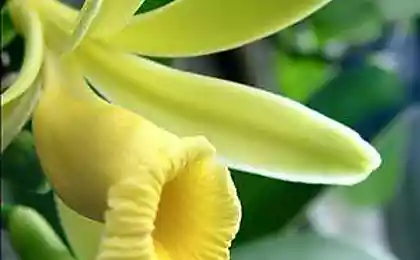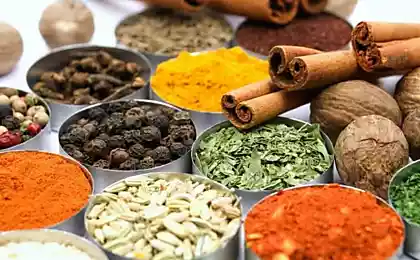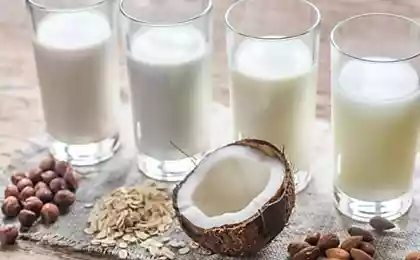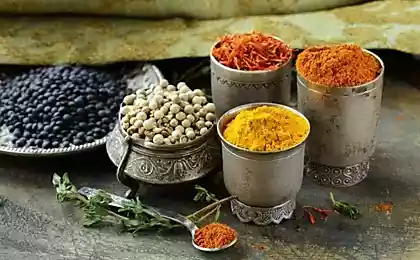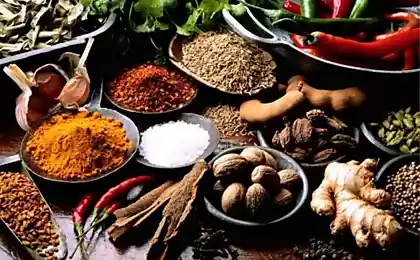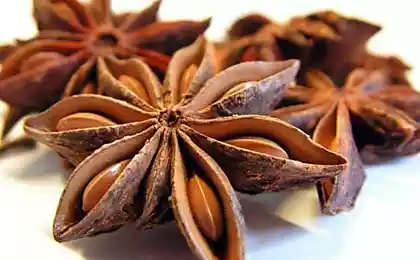228
What is the difference between natural and synthetic vanilla extract
Vanillin is one of the most famous and popular flavorings. I am no different from most housewives and always add it to desserts, pastries and homemade yogurts. One day I was buying condiments, and the saleswoman asked, “You.” vanillin Or chemical? How is it chemical, is there a difference?

DepositPhotos
Vanilla extract turns out, all these penny bags of vanillin and vanilla - synthetic product! Natural vanilla is the fruit of tropical orchids, they are considered one of the most expensive spices in the world. To grow a full-fledged fruiting plant, special care and manual pollination are required.
To pick, dry and send for sale pods will not work, because they do not smell at all. To get a real spice, the pods are collected immature, then immersed for 20 seconds in hot water and 7 days soar in wool blankets at a temperature of 60 ° C. Only after these procedures, the pods become fragrant and acquire brownish.

DepositPhotos
You can export fruits that are covered with a white coating - needle crystals of natural vanillin. And this is possible only after a long (1-5 months) drying of fruits in the fresh air. This way you can get real vanilla. Its price is not small, and buy vanilla extract Organic origin is not so simple.
Natural vanilla is very useful. Its healing aroma acts as a mild painkiller, relieves irritation and helps normalize sleep, stimulates digestion and neutralizes alcohol poisoning. The smell of vanilla reduces cravings for sweets, increases the level of adrenaline and serotonin - the hormone of happiness.

DepositPhotos Scientists quickly derived the formula by which you can synthesize vanillin. And now in stores we buy an artificial product, a synthetic analogue with the smell of vanilla. It is mixed with sugar sand, and you get vanilla sugar. Currently, vanillin is made from anything!
One of the methods of synthesis is to obtain vanillin from pulp waste. The by-product that is formed in the production of paper (lignin) is treated with alkalis and oxidants. It is from this substance that vanillin is isolated and purified.
Another option of “mining” synthetic spice is to use guayacol synthesized from phenols. What is phenol? It's a carbolic acid derived from benzene. toxic and carcinogenic!

DepositPhotos
If you judge other qualities, I will never believe that natural and chemical vanilla smell the same! Just try a pastry with a pinch of organic vanilla, and you will forever forget about artificial.
Natural vanilla is used very economically, 1/20 part of a stick per serving or 1/4 part of a stick per kilogram of dough. No need to add a lot, the dish can be bitter.

Editorial Board
I suggest you do it. vanilla extract at home. Buy four vanilla pods and split them in half. Place the halves in a glass container and pour 100 ml of vodka or rum. Let it brew for at least 3 weeks in a cool place. Use a teaspoon of this tincture to flavor pastries. You can store the extract for up to a year in the refrigerator.
To make vanilla sugar, mix 2 split vanilla pods with 0.5 kg of sugar. Place the mixture in a closed container for one week and stir every day. Use desserts that do not need to be baked.
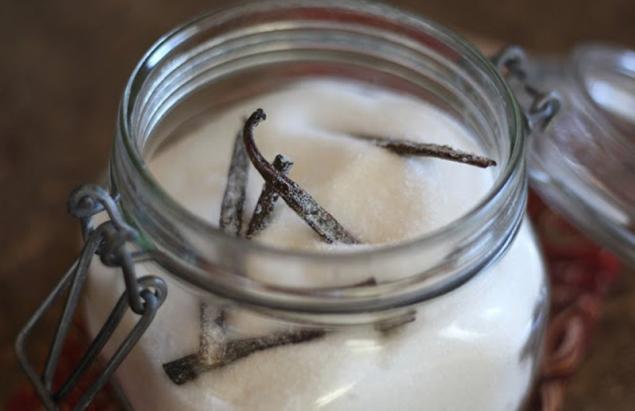
The classic use case of vanilla is to manually rub the contents of a sugar sand pod in a mortar. Add it to your taste.
If synthetic vanillin does not scare you and you want to use it in dishes, experienced cooks advise not to use the powder itself. essence. You need to dilute one bag of vanillin in 50 ml of vodka. Then pour the solution into cold sugar syrup (400 g of sugar per 250 ml of water) and add if necessary.
Since vanillin is different in different manufacturers, try the dosage on a small number of products.

DepositPhotos
If you liked the article, show it to your friends, probably many of them do not know the origin of the usual vanilla sugar.
And you tried dessert with vanilla? Do you think there is a difference in taste compared to synthetic vanillin? Don't forget to write a comment!

DepositPhotos
Vanilla extract turns out, all these penny bags of vanillin and vanilla - synthetic product! Natural vanilla is the fruit of tropical orchids, they are considered one of the most expensive spices in the world. To grow a full-fledged fruiting plant, special care and manual pollination are required.
To pick, dry and send for sale pods will not work, because they do not smell at all. To get a real spice, the pods are collected immature, then immersed for 20 seconds in hot water and 7 days soar in wool blankets at a temperature of 60 ° C. Only after these procedures, the pods become fragrant and acquire brownish.

DepositPhotos
You can export fruits that are covered with a white coating - needle crystals of natural vanillin. And this is possible only after a long (1-5 months) drying of fruits in the fresh air. This way you can get real vanilla. Its price is not small, and buy vanilla extract Organic origin is not so simple.
Natural vanilla is very useful. Its healing aroma acts as a mild painkiller, relieves irritation and helps normalize sleep, stimulates digestion and neutralizes alcohol poisoning. The smell of vanilla reduces cravings for sweets, increases the level of adrenaline and serotonin - the hormone of happiness.

DepositPhotos Scientists quickly derived the formula by which you can synthesize vanillin. And now in stores we buy an artificial product, a synthetic analogue with the smell of vanilla. It is mixed with sugar sand, and you get vanilla sugar. Currently, vanillin is made from anything!
One of the methods of synthesis is to obtain vanillin from pulp waste. The by-product that is formed in the production of paper (lignin) is treated with alkalis and oxidants. It is from this substance that vanillin is isolated and purified.
Another option of “mining” synthetic spice is to use guayacol synthesized from phenols. What is phenol? It's a carbolic acid derived from benzene. toxic and carcinogenic!

DepositPhotos
If you judge other qualities, I will never believe that natural and chemical vanilla smell the same! Just try a pastry with a pinch of organic vanilla, and you will forever forget about artificial.
Natural vanilla is used very economically, 1/20 part of a stick per serving or 1/4 part of a stick per kilogram of dough. No need to add a lot, the dish can be bitter.

Editorial Board
I suggest you do it. vanilla extract at home. Buy four vanilla pods and split them in half. Place the halves in a glass container and pour 100 ml of vodka or rum. Let it brew for at least 3 weeks in a cool place. Use a teaspoon of this tincture to flavor pastries. You can store the extract for up to a year in the refrigerator.

To make vanilla sugar, mix 2 split vanilla pods with 0.5 kg of sugar. Place the mixture in a closed container for one week and stir every day. Use desserts that do not need to be baked.

The classic use case of vanilla is to manually rub the contents of a sugar sand pod in a mortar. Add it to your taste.
If synthetic vanillin does not scare you and you want to use it in dishes, experienced cooks advise not to use the powder itself. essence. You need to dilute one bag of vanillin in 50 ml of vodka. Then pour the solution into cold sugar syrup (400 g of sugar per 250 ml of water) and add if necessary.
Since vanillin is different in different manufacturers, try the dosage on a small number of products.

DepositPhotos
If you liked the article, show it to your friends, probably many of them do not know the origin of the usual vanilla sugar.
And you tried dessert with vanilla? Do you think there is a difference in taste compared to synthetic vanillin? Don't forget to write a comment!
Melaleuca treats psoriasis, acne, sore throat and not only. It doesn't stay on the shelf long!
Pierre Herme's sweet diamonds! Shining crust crystal sugar and alluring vanilla aroma.
